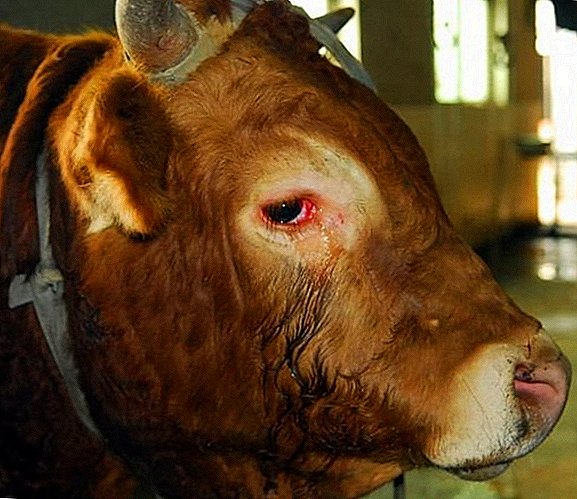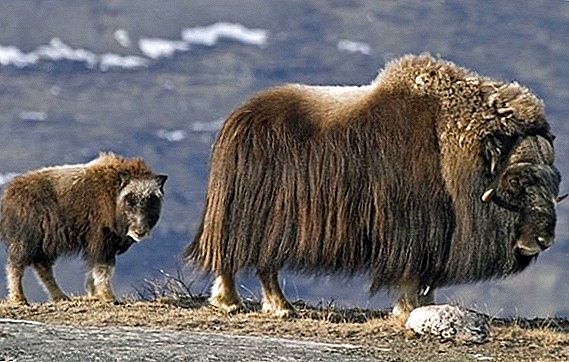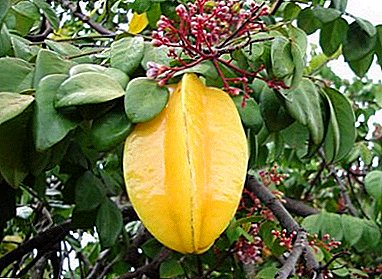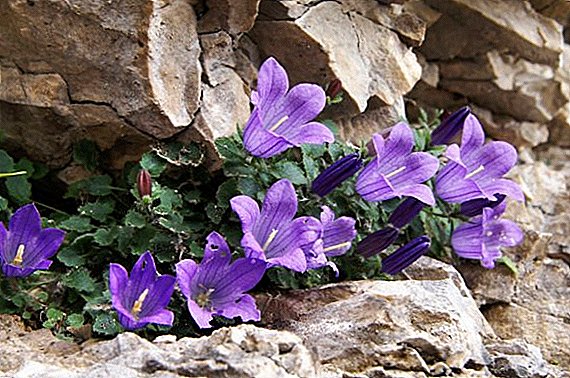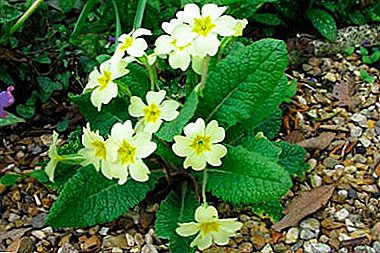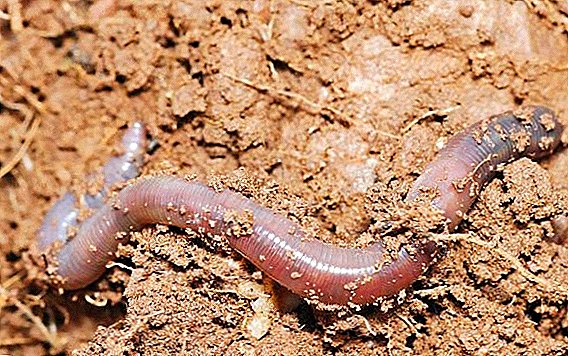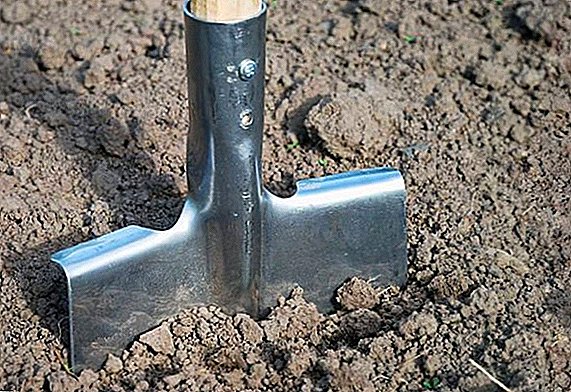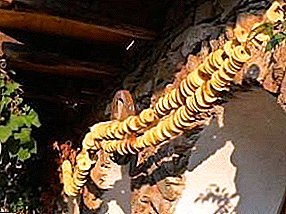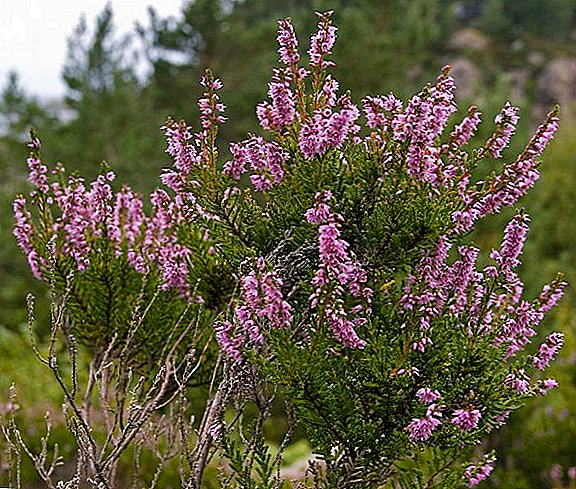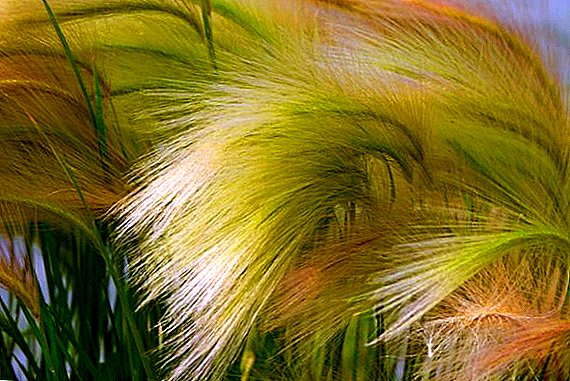 Being in the steppe, it is impossible not to admire a plant swaying in the wind with gentle, light, thin “hair”. They flutter in the wind, they look very beautiful. This plant is called a feather grass. In addition to the aesthetic appearance, he also has healing properties.
Being in the steppe, it is impossible not to admire a plant swaying in the wind with gentle, light, thin “hair”. They flutter in the wind, they look very beautiful. This plant is called a feather grass. In addition to the aesthetic appearance, he also has healing properties.
General description, species and habitat
Everybody knows what a feather grass looks like, because it grows in a very large area.

The most southern growing areas of steel the Caspian regions, the northern countries of Africa, the Gobi desert, even the tropics.
The northern boundary of growth is a zone of temperate climate, which in Eurasia passes through Western Europe, central Russia, the Middle Urals to Transbaikalia. The kovyl grows in the southern and temperate climates in the forest-steppe, steppe zone, in semi-deserts.
Grass can be seen on dry meadows, on open hills, rocky areas under rocks and even on rocks where plants can grow. Depending on where the feather grass grows, in what zone, its appearance is determined.
Common species in Eurasia are:
- feather grass;
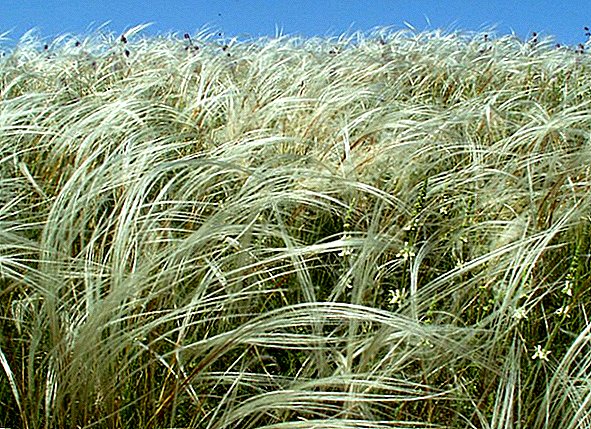
- hairy feather grass;
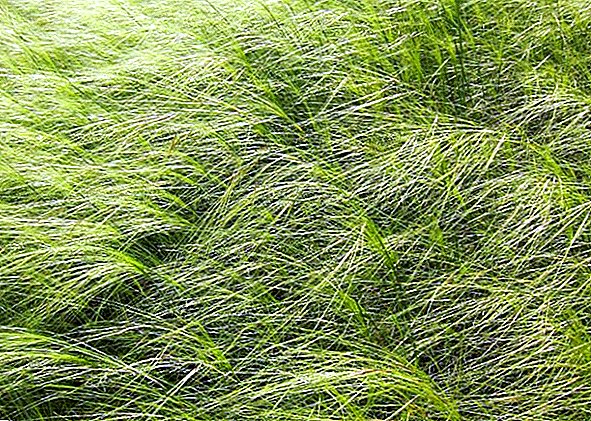
- feather beautiful;

- Far-grass feather
 and etc.
and etc.
Did you know? Among people, feather grass has other names: kovyl, kipets, hairs, martin flax, sheep's death, loved, whistle, pernik, tirsa, stepchina, silk grass.
By type - cereal perennial. The stem reaches a height of 0.6-0.8 m. The rhizome is short, not creeping. The leaves are very narrow, twisted. Inflorescences are paniculata. Seeds are oblong, sharp, up to 1 cm, in the main species with a long, up to 40 cm, feathery "hair" or spine. When the plant is still green and the grains are unripe, the spikelets are very soft to the touch.
Did you know? Grass seeds are very dangerous for animals. They can become entangled in the coat, dig into the skin, causing inflammation and suppuration.
Grow in groups, thick turfs. Propagated by seeds, which carries the wind. This is a brief botanical description of feather grass.
Chemical composition
The chemical composition of grass and seeds has been little studied. This can most likely be explained by the fact that in official medicine, feather grass is almost never used. It is only known about the chemical composition of the plant that during the flowering period the grass contains up to 10.8% protein, up to 2.7% fat, up to 35.3% fiber. The leaves contain cyanogens, in particular - triglovinin.

Medicinal properties
The beneficial properties of feather grass are well known in folk healing. Cyanoids that are contained in the leaves, in small doses, have a sedative and analgesic effect. Also, decoctions and infusions can relieve inflammation, improve blood circulation.
Important! Healing potion in large doses act as a poison.
Therapeutic use
The use of feather grass in folk medicine is quite widespread.

Medicines made from herbs are effective for a number of diseases:
- multiple sclerosis;
- thyroid disease;
- goiter;
- paralysis (especially unilateral after a stroke);
- rheumatism;
- BPH.
Learn more about the use of traditional medicine: dodder, kupena, derbennik, wormwood, cumin, sage, chervil, catnip, swimsuit, gravity
Collection and preparation of medical raw materials
Medicinal is considered the whole plant: and awns, and seeds, and stems with leaves, and roots. Therefore, first for the raw material, we remove the grass to the very root. The collection is made at the time of flowering in May-June. The collected grass is dried in the shade. Roots are also considered healing. They are dug in the fall, dried, as the grass.
Important! No medicinal plant is dried in the open sun.
Grind can be immediately after drying, you can immediately before use. The storage is placed in paper bags or fabric bags so that the contents "breathe". Storage should be dark, without moisture. The term of safe use is determined, as with all medicinal herbs, 2 years.

Recipes of traditional medicine
For treatment in folk medicine used seeds, leaves and roots of the plant. Of these, when healing from various diseases, tinctures are prepared, decoctions, which are taken orally, are used for lotions and poultices.
Important! Before use of national drugs surely it is necessary to consult with the doctor.
Especially healing is considered broth feather on milk. It is used to treat diseases of the thyroid gland, and is also effective for paralysis.
Cooking decoction in milk is easy. A glass of milk should be brought to a boil, pour 1 tablespoon of chopped herbs into it and cook over low heat. For the treatment of thyroid, boil for 5 minutes and insist for half an hour, and for the treatment of paralysis, boil for 15 minutes and insist for 1 hour. Thus, the concentration of decoction will be different. Drink decoction in the treatment of thyroid should be very small portions during the day, the same decoction to apply for warm lotions and hot poultices. To do this, take a clean gauze, moisten with strained liquid and attach to the neck in the thyroid. Cover with foil and hold for 20-25 minutes. This should be done lying down. Such procedures are also healing for rheumatism or inflammation and pain in the joints.
You will be interested to know that in treating rheumatism I help: snyt, gentian, agave, evening primrose, anemone, horsetail, basil, canuper, scorzonera, heather, woodlouse, mountain ash.
Decoction of feather grass on milk with paralysis after a stroke is recommended to be taken three times a day before eating. They also drink decoction of roots on water (1 tablespoon per 1 cup of boiling water).

Even for the treatment of the paralyzed, they use mixed spines of silk grass and mordovnik seeds. In the evening, you need to take 1 tablespoon of the mixture, pour a glass of boiling water over it, wrap it until the morning. You can do this in a thermos. Drink, as with thyroid disease, in tiny sips throughout the day. Treatment with milk broth and the mixture must be alternated.
Please note that in thyroid diseases, the silverweed white, watercress, alokazia, and black chokeberry and hawthorn honey have useful properties.
Effective with radiculitis, inflammation of the joints, rheumatism, multiple sclerosis lotion from alcohol tincture of feather grass and mordovnikovyh seeds. To do this, to 1 teaspoon of the mixture, add 100 ml of alcohol. Insist three weeks in a dark closet (not in the cellar). Use as a rubbing on a diseased area of the body. For the treatment of prostate adenoma, baths with a decoction of a mixture of feather grass and horsetail in equal parts are good. 150 g of the mixture pour 2-3 liters of boiling water, insist 1 hour, strain in a large container and sit in it. The procedure to do at bedtime for 30 minutes. 1-1.5 hours before bathing, make an enema with chamomile.

Contraindications and harm
With the dosage of drugs you need to be careful, strictly follow the recipe and method of application.

Silk Herb Treatment Allergy Contraindicated. Before use, be sure to make a test. Side effects, first of all, can be allergic reactions in the form of redness, skin rash with topical use, bronchospasm - with internal. Dust from grass and seeds can cause irritation of the respiratory tract, with a cough or even an attack of bronchial asthma.
It is worth noting that allergy sufferers are also contraindicated: medicinal tributary, blue cyanosis, boxwood, peppermint, pharmacy chamomile, upside down amaranth, yarnotka
Both in nature and in the garden, the feather grass looks very beautiful. A nice addition is the fact that this plant is a wonderful natural healer.





 and etc.
and etc.